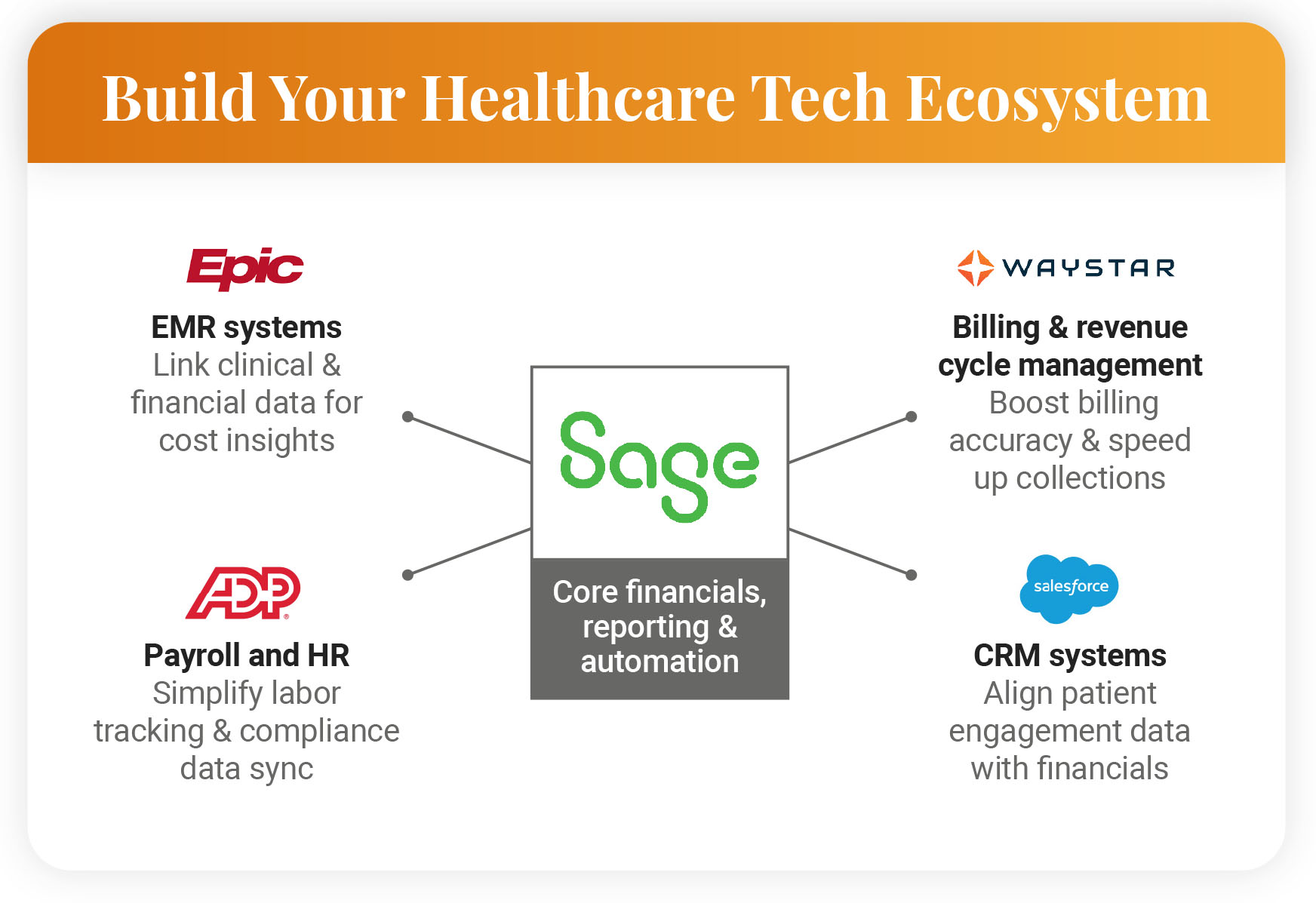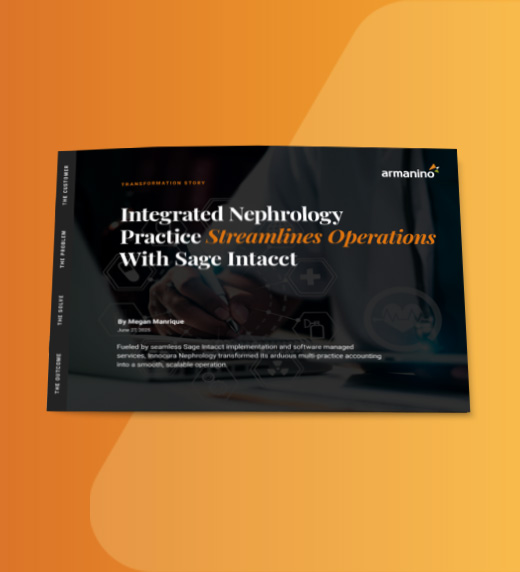
Healthcare CFOs must adapt to value-based care to ensure financial stability, improve patient outcomes and navigate regulatory shifts.
As a healthcare finance leader, you’re constantly balancing competing demands, from aligning with clinicians on patient care to controlling operating costs to meeting rising demands for data and information.
Following the passage of the One Big Beautiful Bill Act (OBBBA) in July 2025, significant payment challenges are imminent. Government and commercial payers are now accelerating the move from fee-for-service to value-based care as an alternative payment model to offset the bill’s spending reductions.
Value-based care (VBC) is a healthcare delivery model that reimburses providers based on patient health outcomes rather than service volume, often through fixed, capitated or bundled payments. VBC and its financial counterpart value-based reimbursement (VBR) aim to reduce costs through improved patient outcomes and by focusing KPIs, such as cash flow at risk, uncompensated care of Medicaid patients and increased emergency room volume. But these models also introduce financial risks so you must have a system for predicting future trends and monitoring cost controls.
Small-to-midsized healthcare organizations — like senior living facilities, safety net hospitals, rural clinics and primary care providers — are grappling with unique challenges under OBBBA. Providers with lower reimbursements, particularly those with high Medicaid volume or fewer patients, may struggle to absorb lower margins. Limited resources and the demand for holistic, preventive care can strain revenue, forcing many to navigate skyrocketing expenses while striving to keep care affordable.
The shift from volume to value pricing is upending traditional financial models, with at-risk reimbursements and new performance criteria redefining care delivery. Medicaid cuts, reduced federal grants, staffing shortages, rising expenses and supply chain disruptions intensify the risks. Strategic and future-focused financial leaders must proactively assess the viability of critical care access and service locations.
Outdated or disconnected technology can compound these challenges. Legacy tools often lack the visibility, automation, interconnectivity and analytics you need to track and improve KPIs. And you can’t improve what you can’t measure. Staying ahead of payer expectations, regulatory changes and financial pressures means you need to invest in advanced healthcare technology that connects your clinical, financial and operational data. Your technology should work for you — not limit access to critical insights.
This playbook shows how implementing a core enterprise resource planning (ERP) solution like Sage Intacct can help you navigate the shift to VBC, solve your toughest challenges, deliver optimal patient care and bolster your organization’s longevity.
As value-based payment models gain traction, healthcare organizations must continue to deliver exceptional care, while also absorbing more financial risk when outcomes fall short or costs run high. Success depends on adopting new integrated human and machine operating processes, improving patient health, managing costs and demonstrating results with data — not just on service volume.
The shift to VBC calls for a new kind of leadership — one that bridges clinical performance with financial strategy, delivers clear, connected insights and uses real-time data to guide bold, big-picture decisions. To do this, you need tools that go beyond spreadsheets and static reports so you can track metrics, respond to trends and shape your organization’s future.
Building a financial strategy for value-based care starts with aligning your ERP to VBC core principles. Here’s how an enterprise application like Sage Intacct can help you translate VBC foundations into practical, data-driven strategies:
Tracking outcome-based KPIs like readmissions, chronic condition management and patient satisfaction is non-negotiable. This ERP helps you stay ahead of these metrics by giving you real-time visibility and tying them directly to financial and operational performance. Monitoring these KPIs helps you identify trends, intervene earlier and, ultimately, prevent avoidable rehospitalization and other care costs, contributing to a better overall patient experience.
Sage Intacct supports detailed analysis of cost-per-case and cost-per-patient data, helping you spot inefficiencies and protect margins more effectively. It also supports price transparency by making it easier to report and communicate the true cost of care to patients and payers.
With AI-enhanced dashboards and dimensional reporting, the system can help forecast trends, uncover patterns and guide strategy. This level of insight supports both clinical and financial decision-making and adjusting operations as needed. It can also indirectly support hybrid care models by providing insights into how different types of care, like virtual or in-person visits, are performing so you can decide what works best for your patients and your budget.
Aligning financial and operational data across departments and care settings supports care coordination between providers, specialists and facilities, while maintaining a clear view of financial performance. For example, Sage Intacct links your scheduling and accounting systems, syncing appointments, staffing and billing to reduce administrative friction and support a smoother experience for patients and care teams. This functionality will enhance your revenue cycle processes.
As your organization takes on more financial risk with VBC, it becomes critical to understand how performance is rewarded based on payer contracts and where to make adjustments. You must be able to depend upon your ERP system to provide the data needed to plan for and account for any cost and revenue outliers.
Track KPIs like satisfaction, readmissions and prevention
Identify cost drivers, cut waste and support price transparency
Forecast trends, uncover patterns and strengthen decisions
Align resources and deliver the right care at the right time
Model contracts, and track performance against payer benchmarks
Sage Intacct for Healthcare is designed for small-to-midsized organizations like senior care facilities, federally qualified health centers, physician groups and outpatient services. Here’s why healthcare CFOs in this space trust Sage Intacct to lead them through the shift to alternative payment models:
Sync EMR, payroll and financial data
Track care costs by visit, provider or service line
Automate billing, reporting and approvals
Consolidate financials across entities and locations
Get real-time visibility into operational and financial performance
As VBC becomes the healthcare industry standard, your finance team must overcome daily challenges to deliver efficient, high-quality care, meet payer expectations and keep your organization financially healthy. Here’s how Sage Intacct can help you solve them:
It might be time for a tune-up. Get a Health Check to make sure your setup is current and that you’re making full use of Sage Intacct’s automation, reporting and integration features to improve care delivery and strengthen financial performance.
Your healthcare organization typically relies on multiple systems to manage its clinical operations, patient engagement, billing, payroll, scheduling and compliance. If these systems don’t communicate, your team ends up relying on manual workarounds and losing key data in the process.
A connected tech ecosystem eliminates these gaps, allowing platforms to work together and giving you instant access to critical financial and operational data. Centralizing your financials with Sage Intacct enhances efficiency, accuracy and responsiveness.
The ERP integrates financial management, reporting and automation with systems you already use. Whether you’re managing multiple facilities, navigating payer contracts and government compliance or tracking care costs, a connected tech ecosystem helps you build a single source of truth and simplifies operations.
A central ERP like Sage Intacct gives you a strong foundation for your healthcare operations. Adding specialized systems for clinical care, HR and compliance ensures smooth data flow and keeps your teams working together with consistent data.
Here’s how a well-integrated healthcare tech stack comes together:

To compete in value-based care, your systems need to talk to each other — and work for each other. Here are some key best practices to get started:
The shift to value-based care isn’t slowing down, and neither should you. As a leading healthcare consultant and premier Sage Intacct partner for over 10 years, we’ve helped small and medium-sized healthcare organizations with rapid implementations and ongoing support. Learn more about what powers ERP project success and explore how our award-winning Sage Intacct experts can help you get the most ROI from your implementation.
Sage Intacct can help you harness your data and technology to make strategic, informed decisions that set you up for sustained success. Reach out to our experts to learn how Sage Intacct can drive value for your healthcare organization.


